THE FIRST INSTALLMENT IN A SERIES ON THE INAUGURATION OF SARAH C. MANGELSDORF AS THE UNIVERSITY OF ROCHESTER’S 11TH PRESIDENT.
In the weeks leading up to President Sarah C. Mangelsdorf’s inauguration on Friday, October 4, one of the University’s treasured artifacts—the mace—has been undergoing its own preparation.
Ordinarily housed in the University Archives, in August the four-foot-long, 6.4-pound silver and mahogany staff journeyed to Canal Metalsmiths in nearby Fairport, where a silver section was removed and sent to an engraver in New York City, who added the name of Rochester’s 11th president.
During an afternoon ceremony at Eastman Theatre, Mangelsdorf will be handed the mace that now, with her name on it, marks a symbolic investiture of authority in her as president.
Please join us to celebrate the inauguration of Sarah C. Mangelsdorf as the University of Rochester’s 11th president.
Inauguration ceremony: 2:30 p.m. at Kodak Hall at Eastman Theatre.
She will also be handed two other insignia: the original University of Rochester charter, granted by the State of New York and providing for the “Establishment of an institution of the highest order for scientific and classical education”; and a University seal.
The seal looks like a medal, but has a very different meaning. Each president has one of his or her own, with an individualized engraving on the back. The seal represents the president’s authority to emboss the University’s official seal on diplomas and other documents.
Why does the presidential inauguration—both at Rochester and at many other institutions of higher learning—remain so steeped in tradition, so focused on symbols of authority and its exercise?
Melissa Mead, the John M. and Barbara Keil University Archivist, has wrestled with that question. Fundamentally, it has to do with honoring trust. The ritual objects “are making physical something that is intangible,” she says. “We say to new presidents, ‘guard this well,’ and ‘we place this in your care.’ We are literally placing the physical embodiment of authority in their hands.”
Across many decades, these same insignia have invested authority in presidents with wide-ranging leadership styles, each of whom has also shaped his own ceremony—as Mangelsdorf will do with hers on October 4.
The Charter, the Seal, and the Mace
(University of Rochester photos / University Archives)
For generations, three ritual objects have been the centerpiece of the presidential inaugural ceremony.
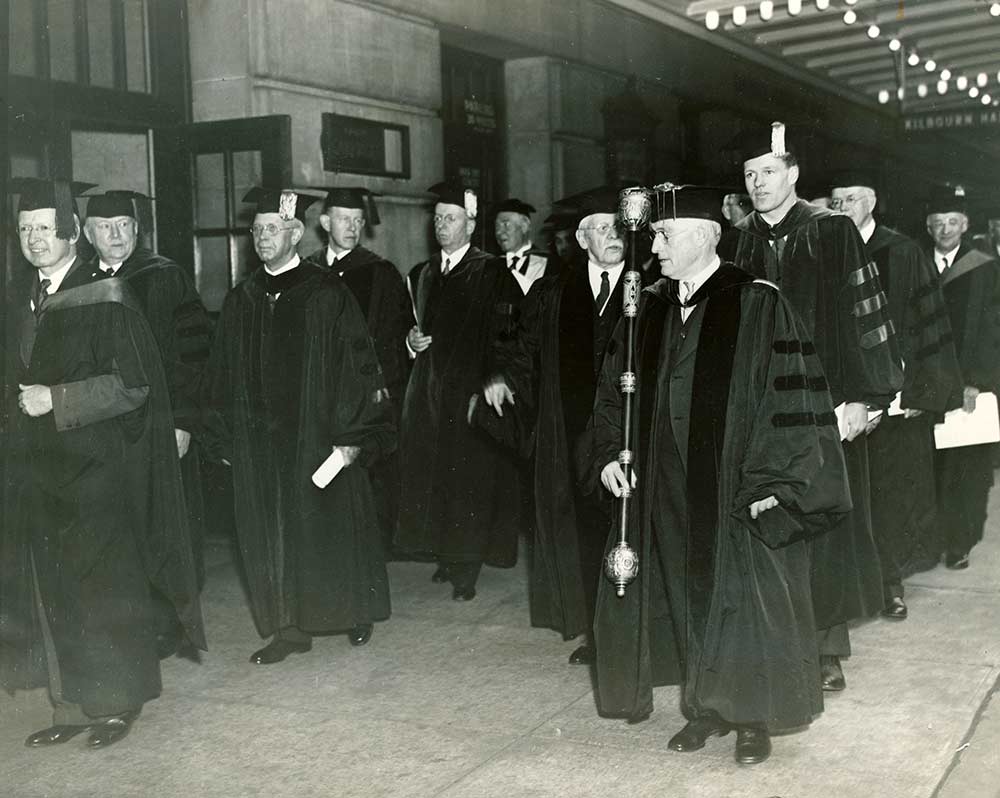
RITUAL PROCESSION The mace was brand new on November 15, 1935, when Alan Valentine was inaugurated as the University’s fourth president. Holding the mace—engraved with not only Valentine’s name, but each president and acting president preceding him—is Edwin Fauver, director of physical education. The 6-foot-plus tall Valentine, a 33-year-old historian and previous Master of Pierson College, Yale University, is directly behind him.
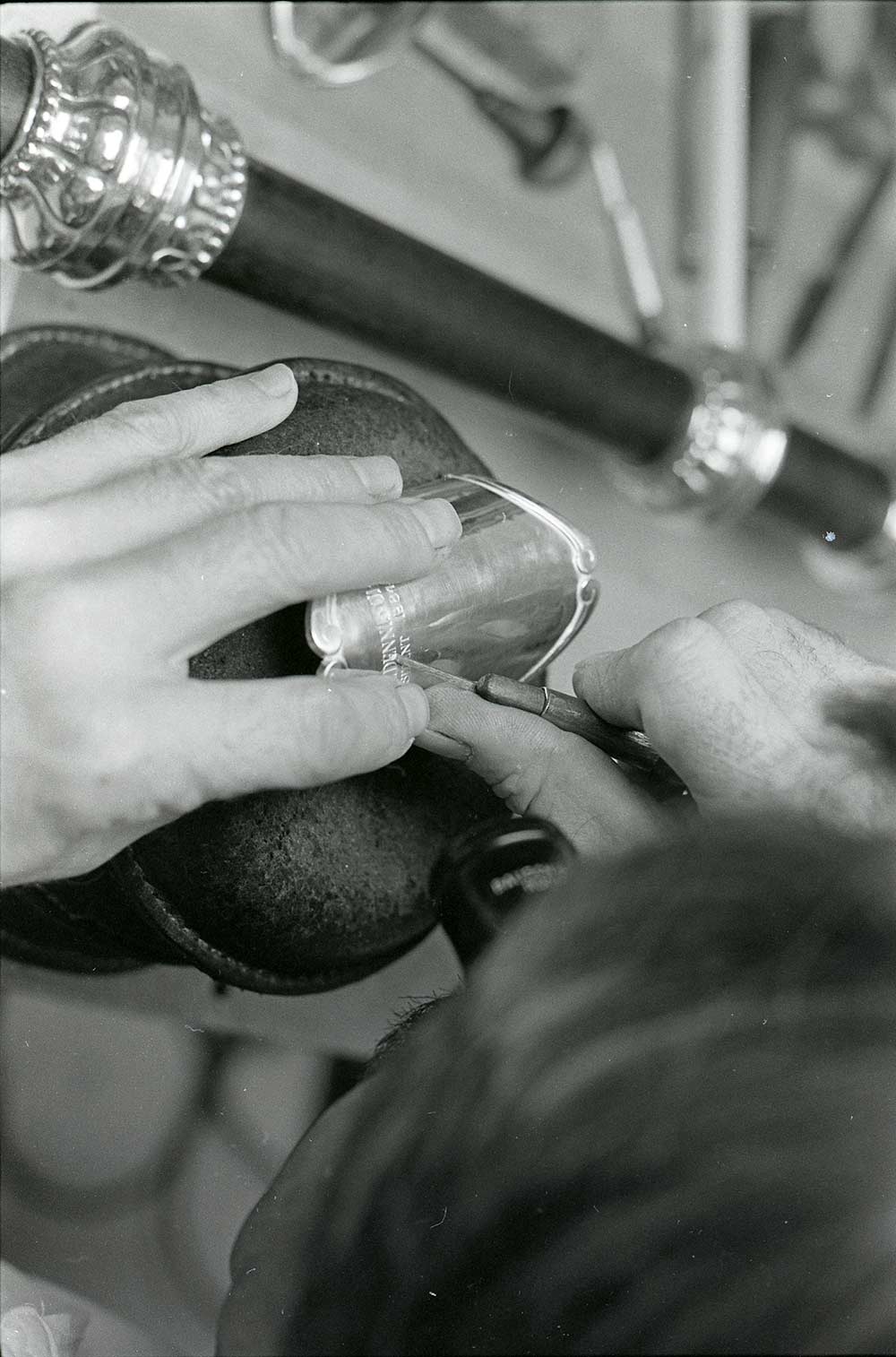
ENGRAVING FOR POSTERITY A metalsmith engraves the name of George Dennis O’Brien into the mace, in preparation for O’Brien’s inauguration as the University’s eighth president, on October 1, 1984. O’Brien’s name was actually the 11th to be added to the mace. The first was that of Ira Harris, who led the University as chancellor before Martin Anderson was inaugurated as Rochester’s first president. The mace also includes the names of acting presidents Samuel Lattimore (1896–98) and Henry Burton (1898–1900). The name of Richard Feldman, who served as interim president from March 2018 to July 2019, was added to the mace in August, along with Mangelsdorf’s.
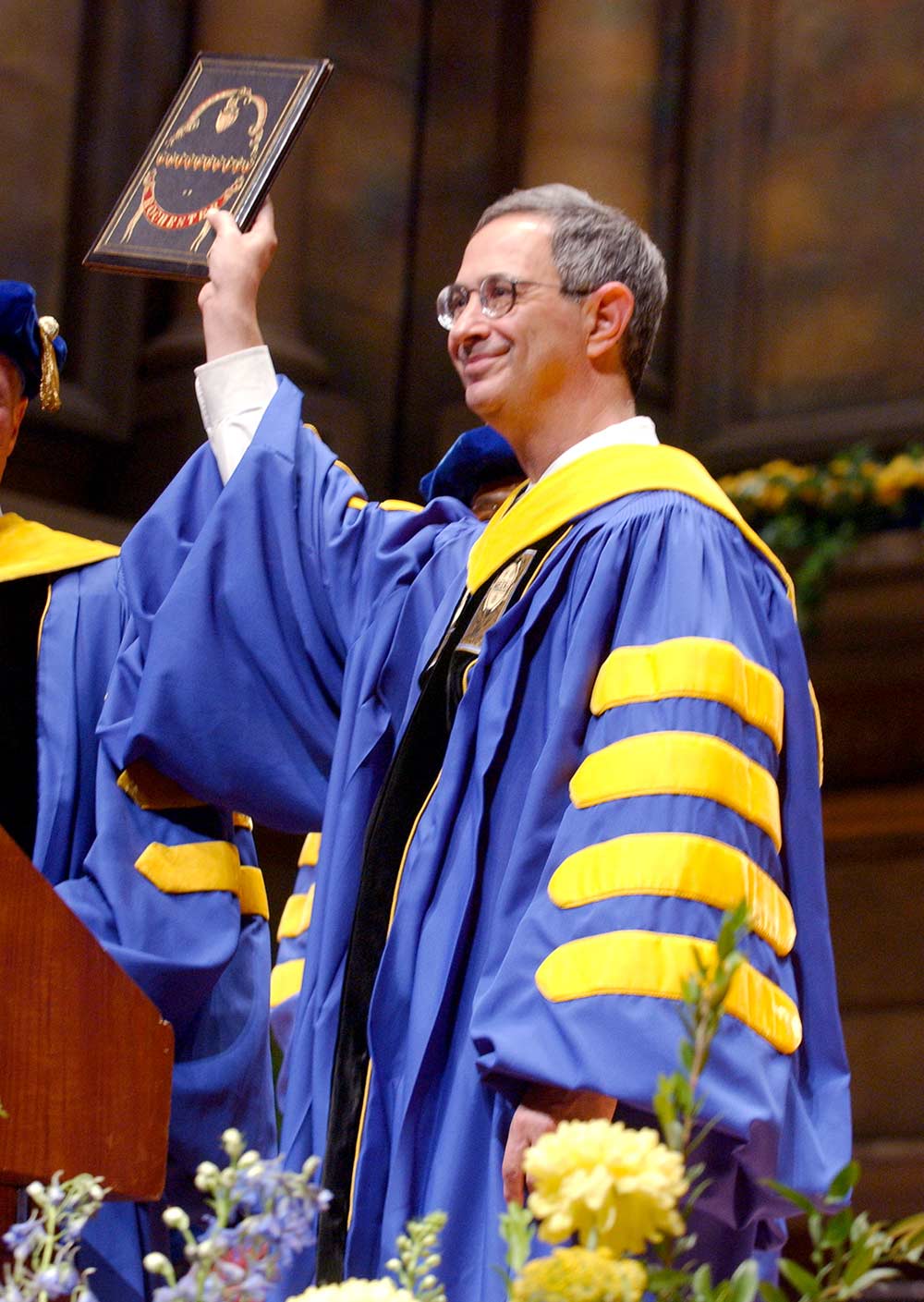
FOUNDING DOCUMENT Joel Seligman holds up the original University charter at his inauguration as the University’s 10th president on October 23, 2005. The charter dates from 1851—the year after the University’s founding. The regents of the University of the State of New York granted Rochester a provisional charter until it could raise $130,000—$30,000 for a location and buildings, and the balance for a permanent endowment.
The charter’s leather binding, the work of an Albany craftsman, displays red and white hand-painted banners and an eagle’s head.
In 2017, the Department of Rare Books, Special Collections, and Preservation established the annual tradition of Charter Day. Each year, on or around January 31, the department places the charter on public display. The charter is also digitized and accessible on the department’s website.
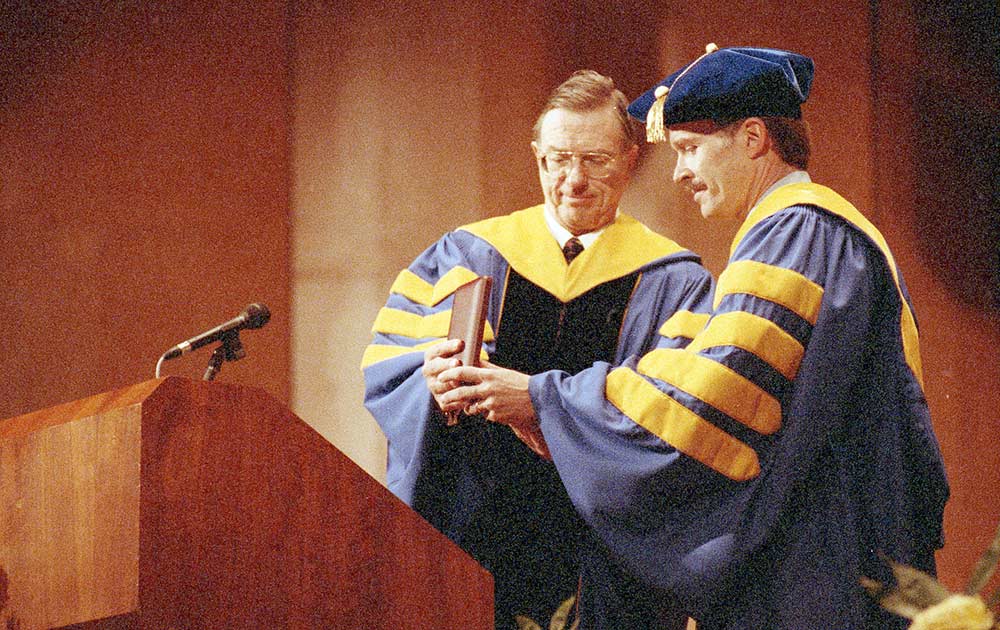
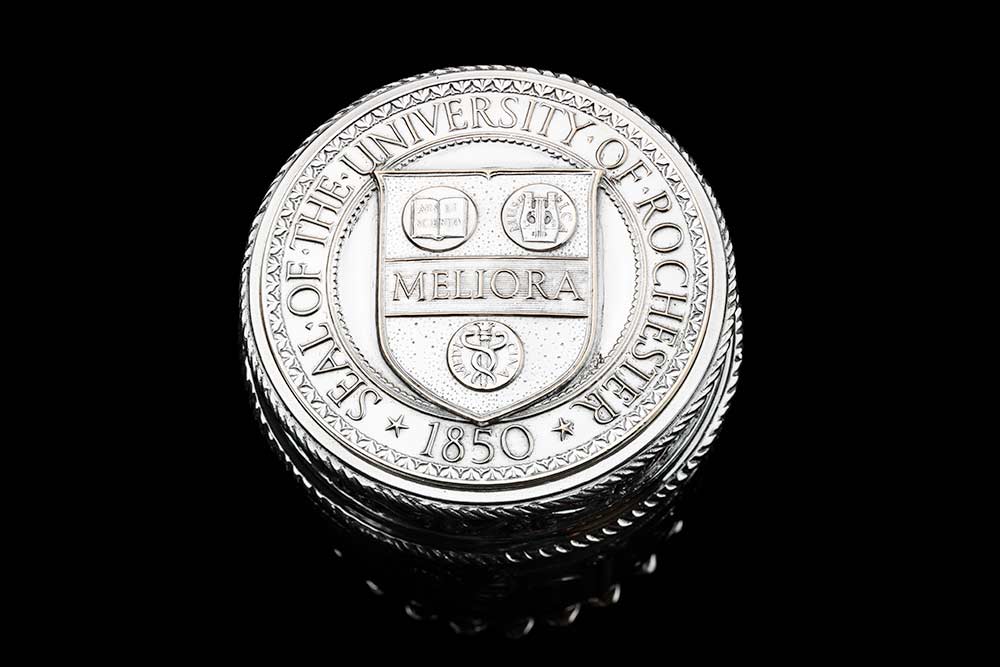
(University of Rochester photo / J. Adam Fenster)
A SYMBOLIC SEAL Dating from the University’s earliest years, the official seal is embossed on documents and engraved on one end of the mace.
Each president receives a circular bronze medal engraved with the seal as well. The medal is a physical symbol of the president’s authority to emboss the seal—distinct from the University logo, which is used broadly on University gear and on print and digital publications—on diplomas and other official documents. At top, Robert Goergen ’60, chair of the Board of Trustees, hands Thomas Jackson his medal at Jackson’s inauguration as the University’s ninth president on October 22, 1994.
While the seal dates from the University’s earliest years, the details of its design have changed. Jackson was the first president to be presented with the most recent incarnation. One design element has been consistent from the beginning: the University’s motto, Meliora.
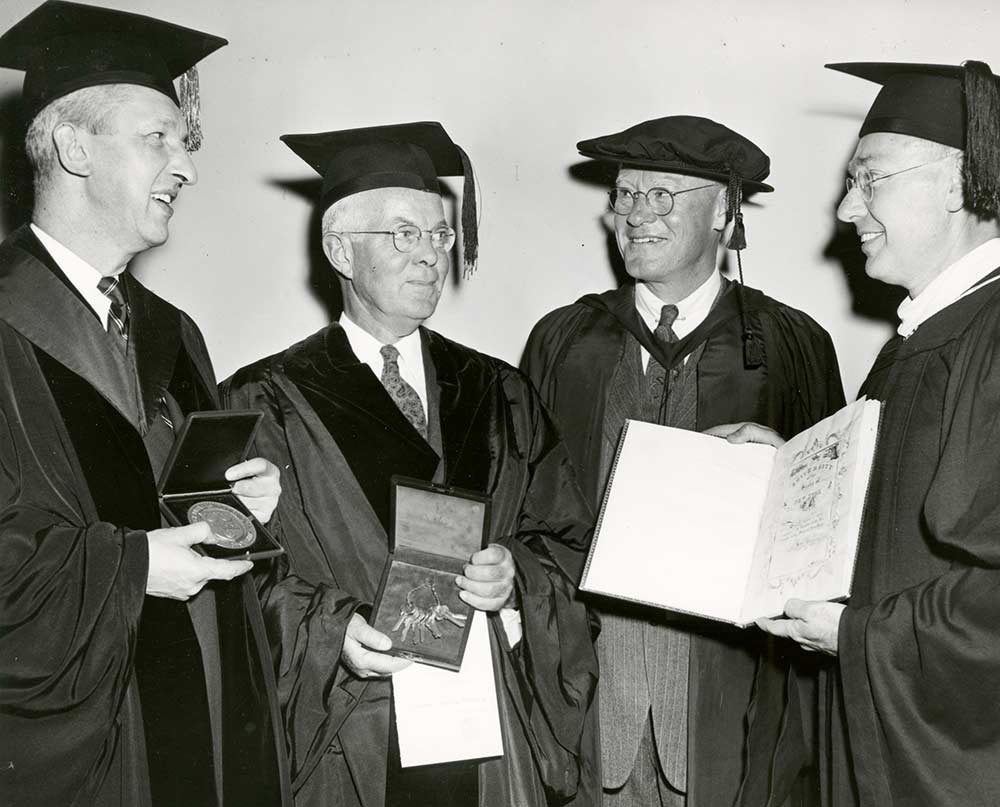
THE KEYS TO THE UNIVERSITY A fourth insignia—a set of keys to the University—was once handed to the president at inauguration. Early presidents, such as Martin Anderson, whose campus until the 1870s consisted of a single building, made good use of them. By the time Cornelis de Kiewiet (second from right) was inaugurated as the University’s fifth president on June 11, 1951, the keys were purely symbolic, and his was the last inauguration to include them. Vice President and Treasurer Raymond Thompson is holding the keys; Provost Donald Gilbert, the seal; and University Librarian John Russell, the charter.
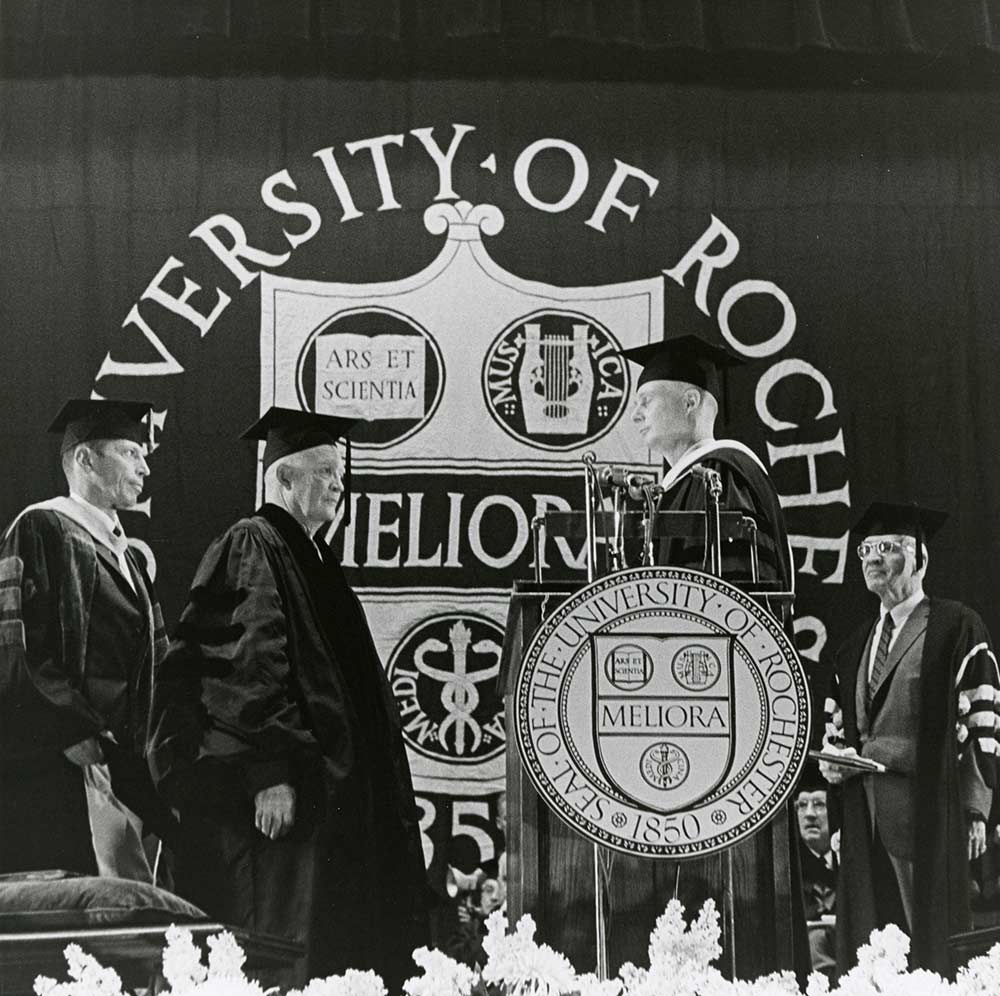
SPECIAL GUESTS AND DIGNITARIES New presidents invite colleagues from around the nation, including leaders of other universities, to their inaugural ceremonies. Some have also used the occasion to present honorary degrees. At his inauguration as the University’s sixth president on May 17, 1963, W. Allen Wallis presents an honorary degree to former president of the United States Dwight Eisenhower. Wallis, an economist and statistician, had been a special assistant to Eisenhower during Eisenhower’s second presidential term. Eisenhower had also been a university president himself—Columbia’s 13th president, from 1948 until 1953. Appearing on either side of Eisenhower and Wallis are Joe Howland, professor of radiation biology (left), and Gilbert McCurdy, a University trustee.
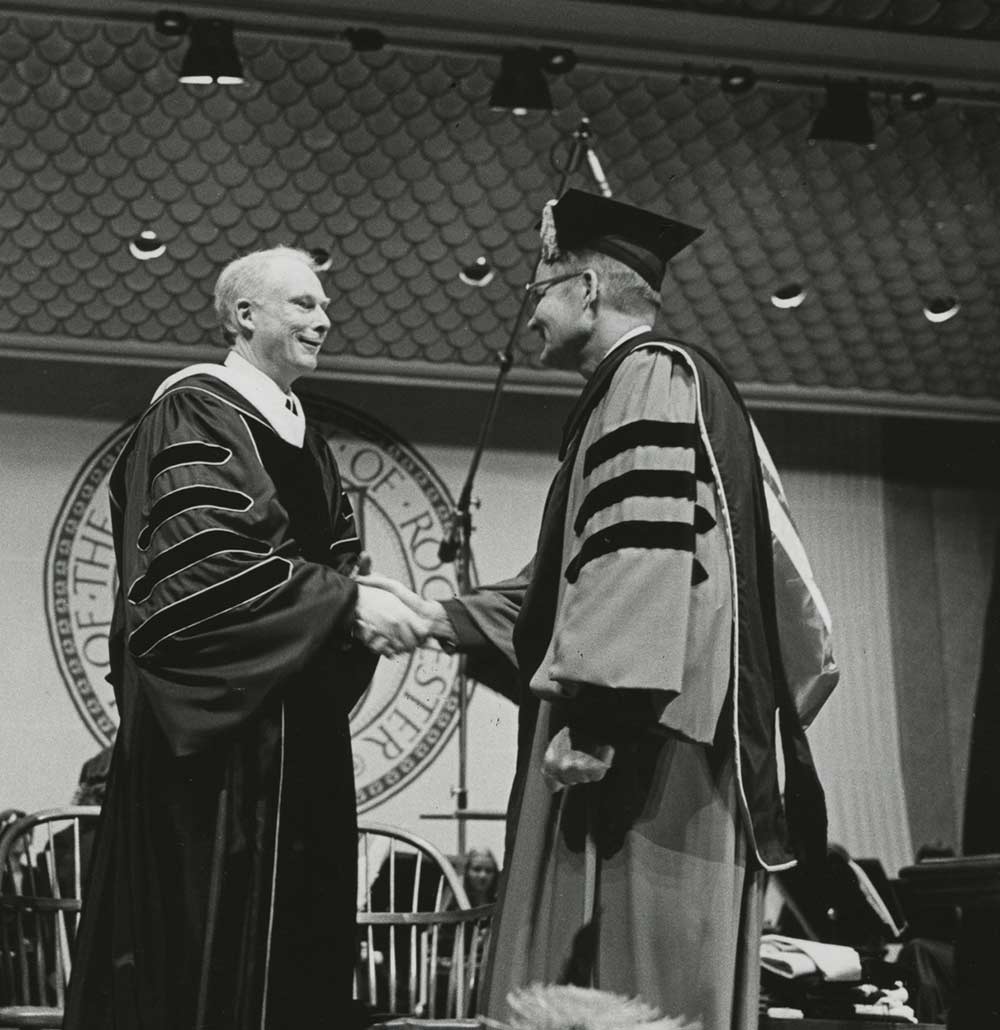
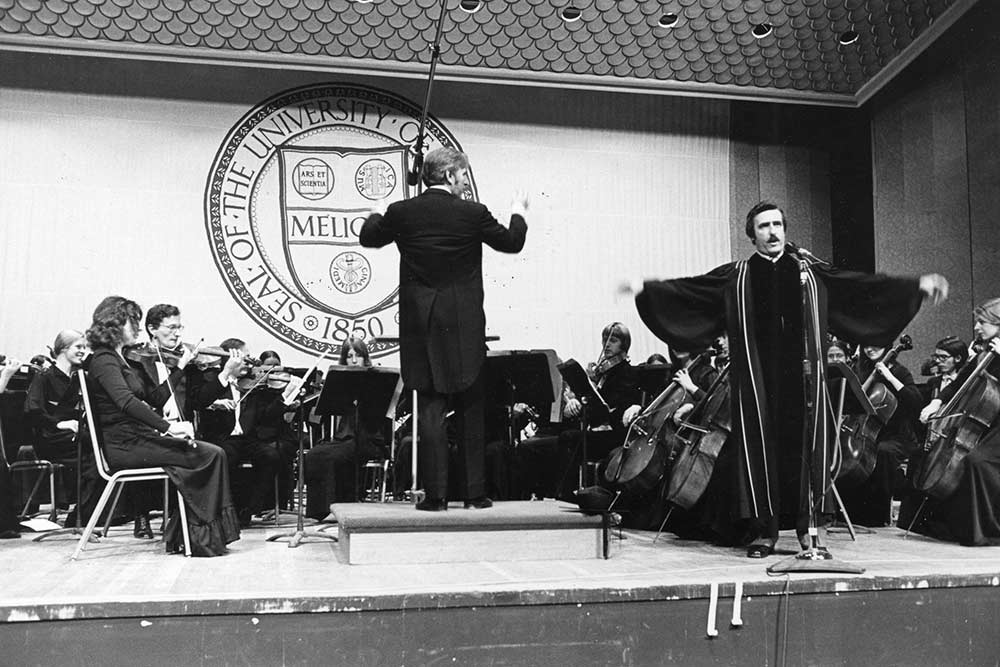
CELEBRATING IN SONG Every inauguration ceremony has incorporated music, and the selections have varied widely. At the inauguration of Robert Sproull (right, shaking the hand of predecessor W. Allen Wallis) as the University’s seventh president on February 1, 1975, the Eastman Philharmonia performed “Pan and the Priest,” by Howard Hanson, then director emeritus of the Eastman School of Music; “Leonore Overture No. 3, Op. 72,” by Beethoven; and closed with John Braund ’53, ’61W (Mas), associate director of alumni relations, leading in the singing of “The Genesee.”
Mangelsdorf’s inauguration will include multiple performances by Eastman School of Music musicians and ensembles, as well as a piece commissioned by prominent film composer Jeff Beal ’85E. It, too, will close with a performance of “The Genesee,” this time by University a cappella groups.
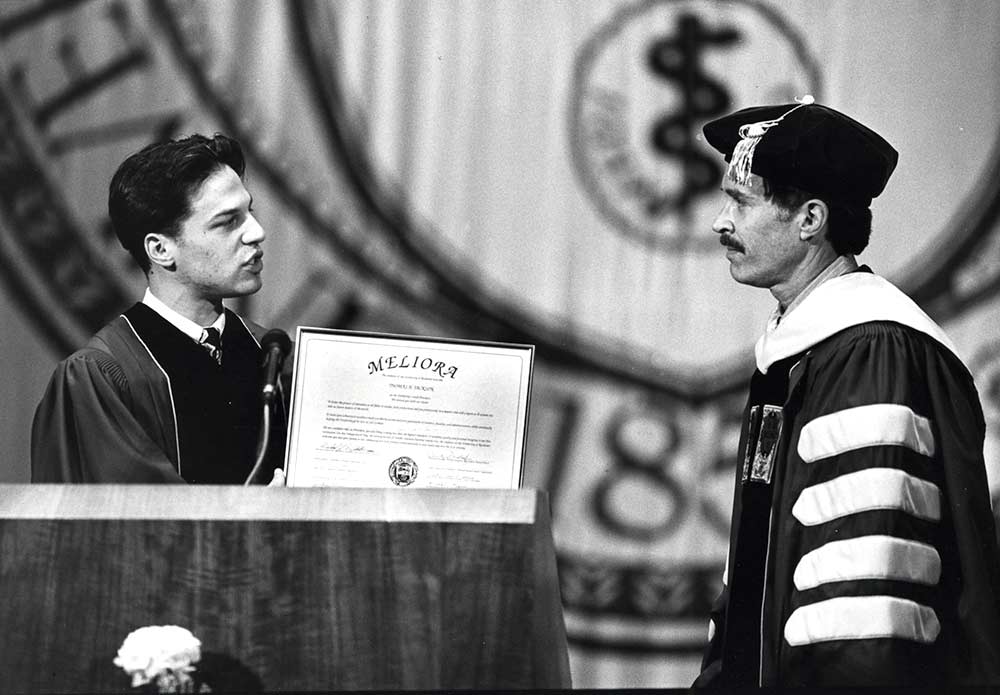
OH, THE PLACES THEY’LL GO Student leaders are traditionally among those who welcome the new president. President Mangelsdorf will be welcomed at her inauguration by Students’ Association President Jamal Holtz ’20. Welcoming President Jackson at his 1994 inauguration is Student Association President Josh Shapiro ’95, now attorney general of the state of Pennsylvania.



